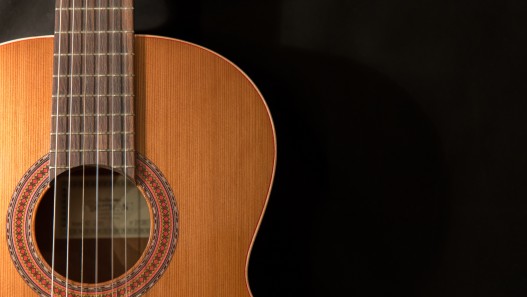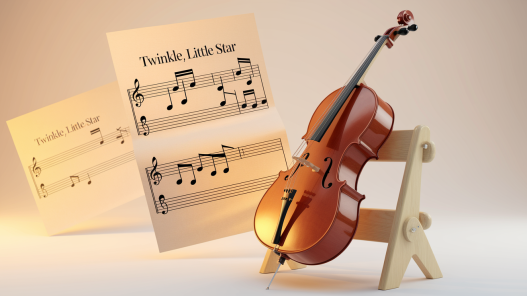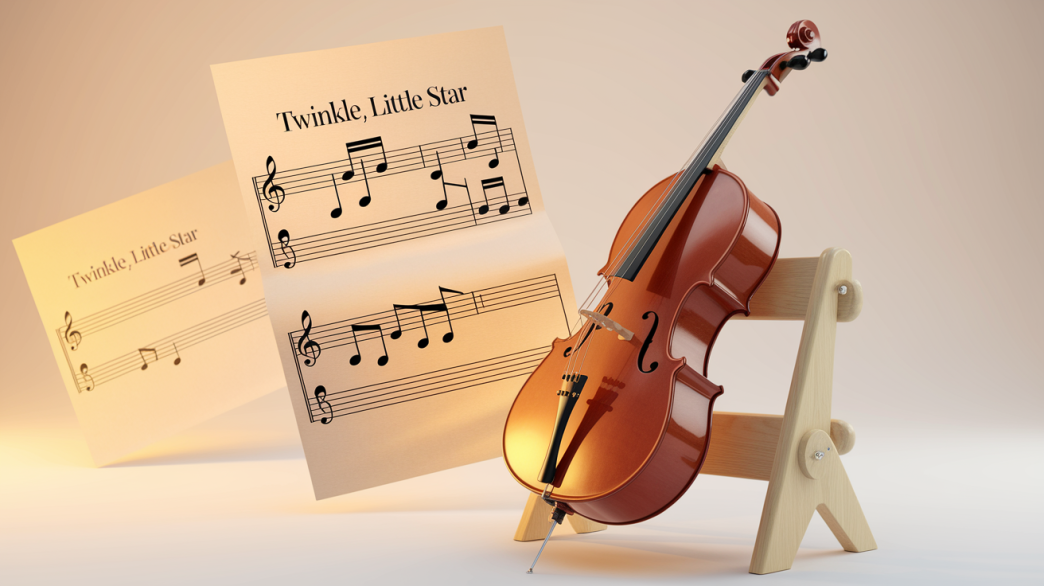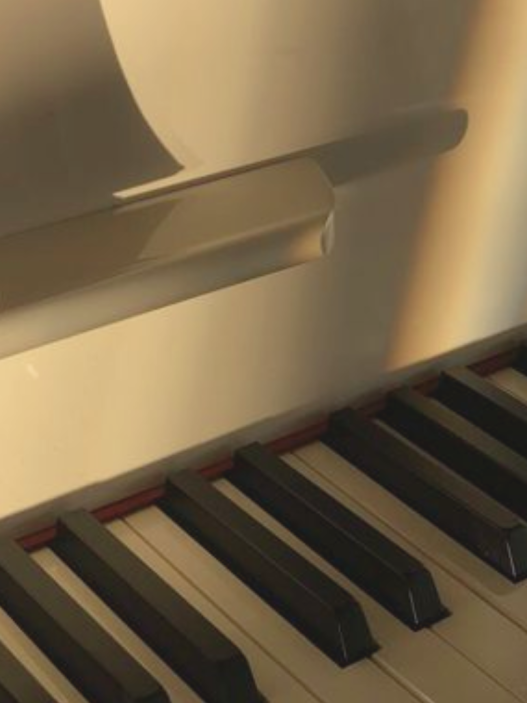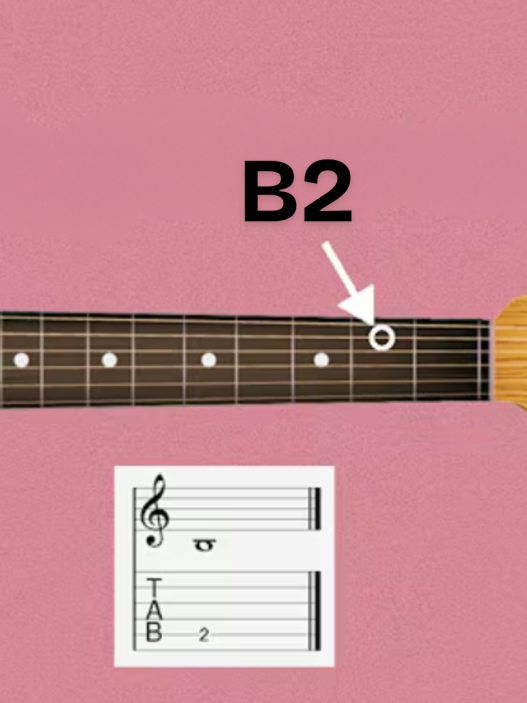For new cellists just starting their musical path, “Twinkle, Twinkle, Little Star” is a classic tune worth learning early.
This well-known nursery rhyme has been cherished for generations with good reason – its straightforward melody makes it ideal for beginners, helping build a strong foundation for cello skills.
Its simplicity is valuable – practicing this song improves finger placement, bow control, and rhythm.
You’ll learn how to play it, find tips to enhance your technique, and understand why this basic song matters in any beginner cellist’s practice routine.
Learning this familiar melody marks an important first step toward playing more complex pieces, whether you’re practicing alone or with other instruments.
Let’s begin playing!
What are the Cello Notes for “Twinkle, Twinkle, Little Star”?
When learning to play “Twinkle, Twinkle, Little Star” on the cello, it’s essential first to understand the song’s key and scale.
The melody of this popular nursery rhyme is typically played in the key of C major, which is ideal for beginners due to its simple, clear notes with no sharps or flats.
The song utilizes basic notes that are easily accessible on the cello, particularly for beginners. These include the open strings (C, G, D, A) and the first few notes on the fingerboard.
The melody moves smoothly between the notes of the C major scale: C, D, E, F, G, A, B, and back to C.
Each note in this simple song corresponds to a specific string and finger placement on the cello.
How to Play “Twinkle, Twinkle, Little Star” on Cello: A Step-by-Step Guide
Playing “Twinkle, Twinkle, Little Star” on the cello is a great way to start your musical journey. Here’s a simple, step-by-step guide to help you play the song, focusing on bowing technique, finger placement, and rhythm.
1. Get Your Cello Ready

Before you begin, ensure your cello is properly tuned. The strings should be tuned to C, G, D, and A, from lowest to highest.
2. Proper Bowing Technique
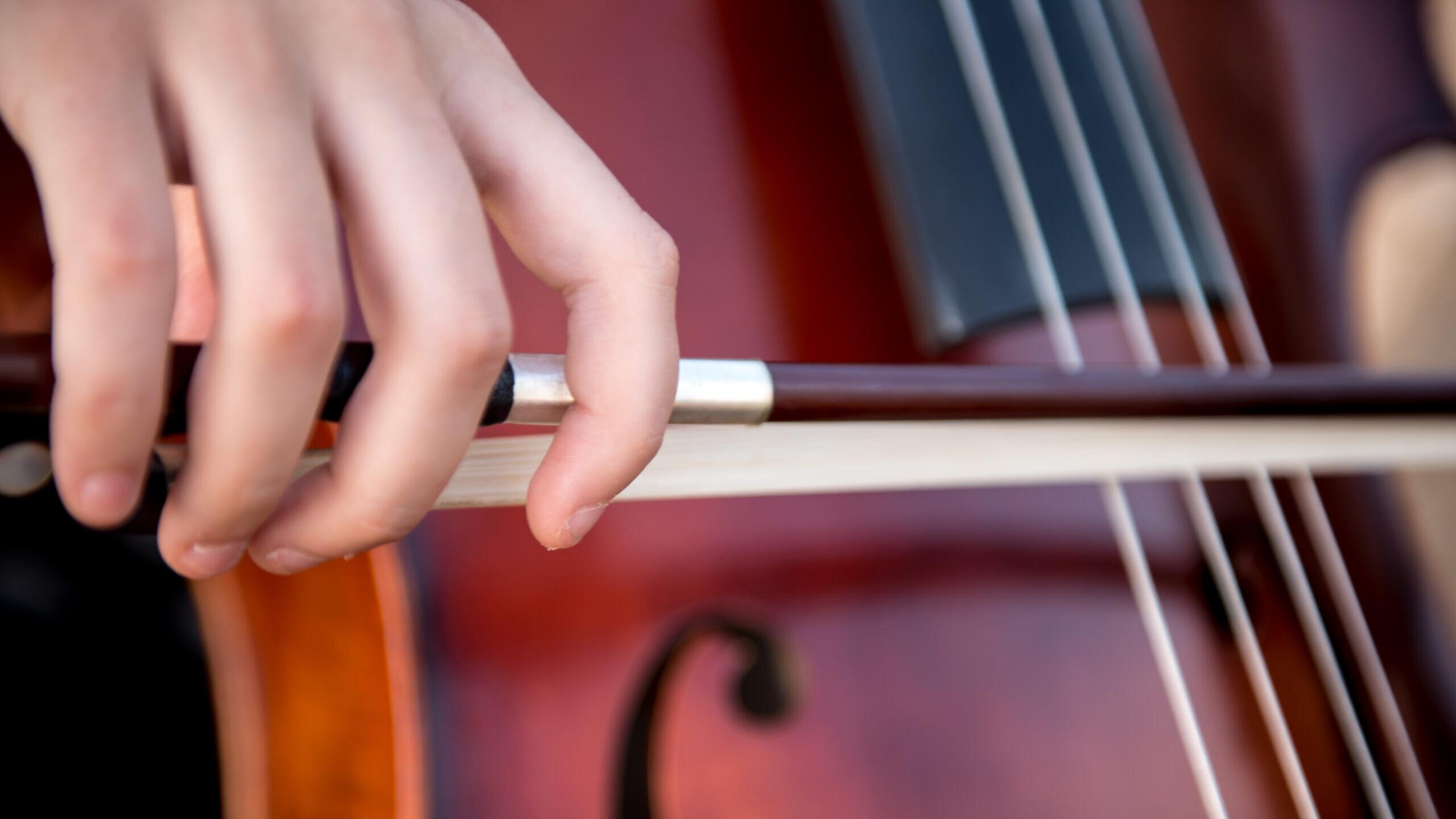
-
Hold the bow with your right hand using a relaxed grip. Keep your fingers curved and your wrist flexible.
-
Position the bow on the C string for the lower notes and the A string for the higher notes.
-
Practice drawing the bow smoothly across the strings, keeping it parallel to the bridge.
3. Finger Placement
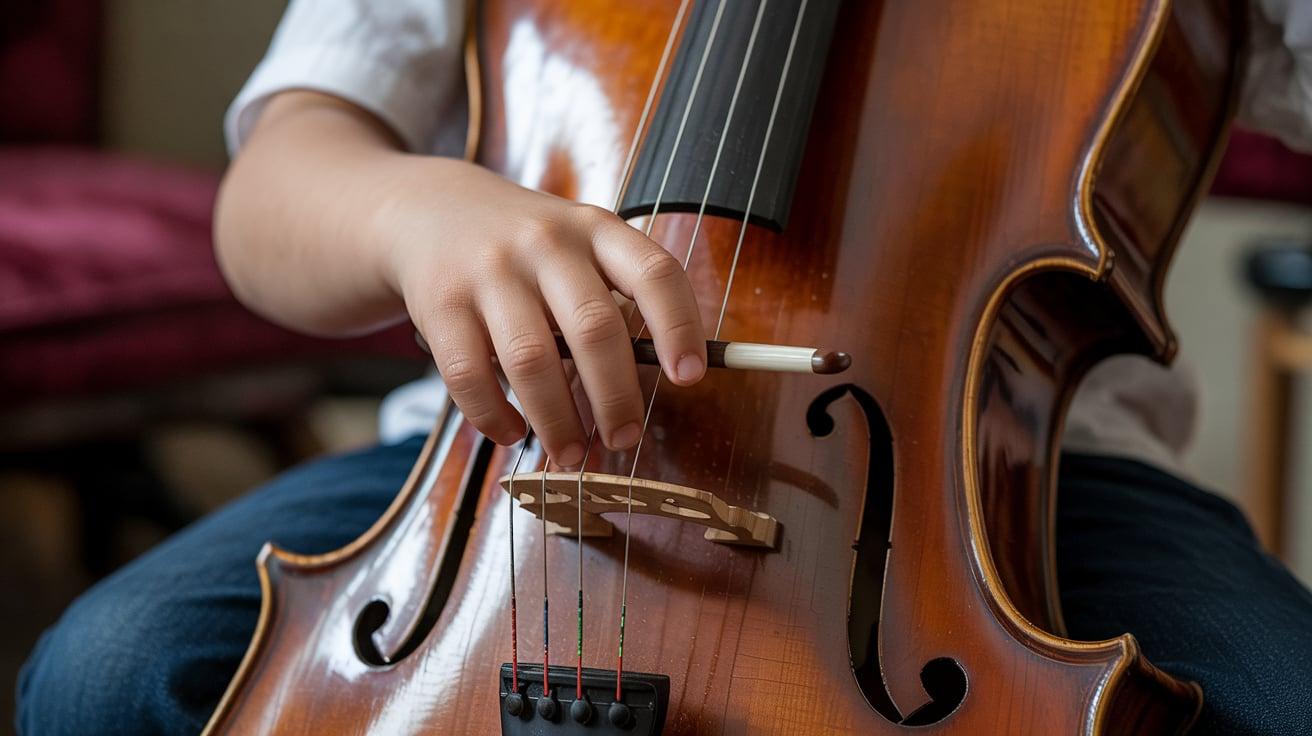
-
Start with the C string for the first few notes.
-
The basic notes you’ll play are on the open strings and in the first position. Use the following finger placements:
Open C string: No fingers, just the open string.
D: Place your first finger on the C string.
E: Place your second finger on the C string.
F: Place your third finger on the C string.
G: Play the open G string.
A: Place your first finger on the D string.
B: Place your second finger on the D string.
4. Playing the Song
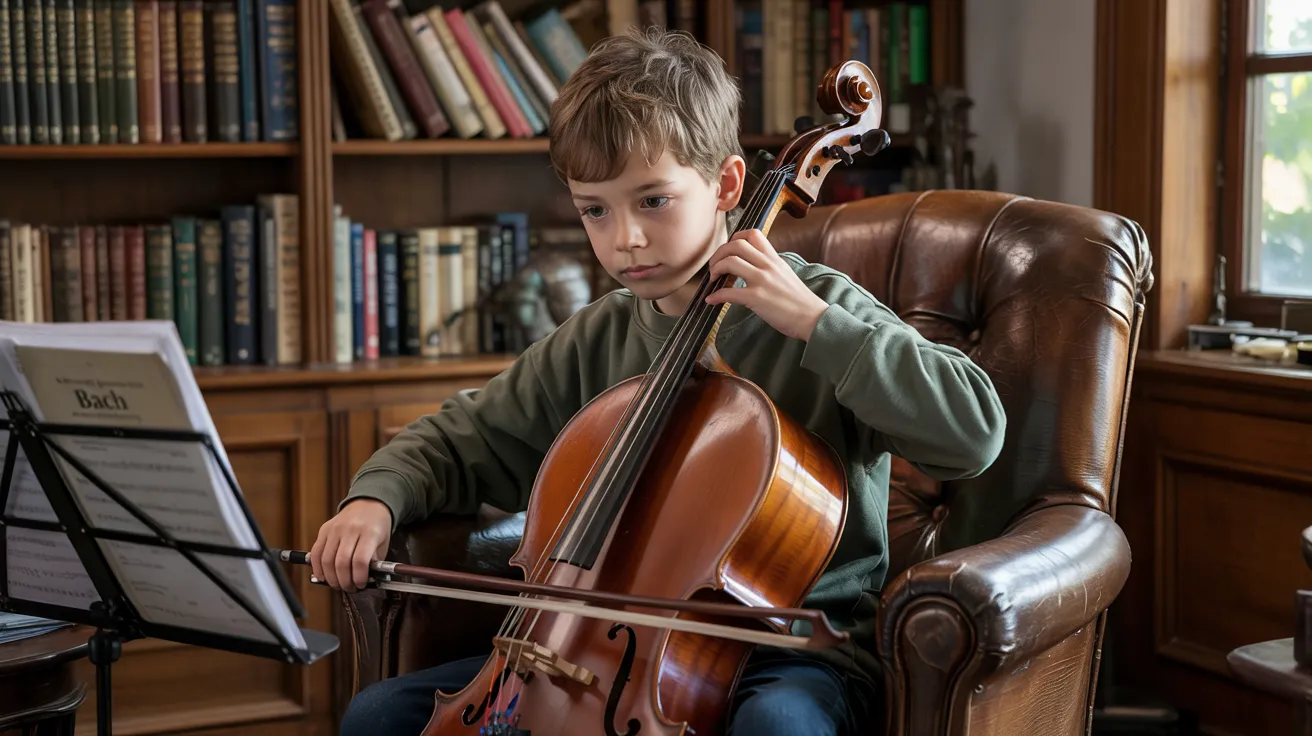
Now that you’re familiar with the notes and bowing, let’s break the song into sections:
-
First Line: “Twinkle, twinkle, little star”
-
Start with C (an open string), then move to D, E, F, and G.
-
Repeat the first few notes for the melody.
-
-
Second Line: “How I wonder what you are”
-
Continue with G, F, E, D, C.
-
Repeat the melody for each line, following the same pattern.
5. Focus on Rhythm and Timing
The rhythm of “Twinkle, Twinkle, Little Star” is simple and steady, so it’s important to keep a consistent tempo:
-
Each note is usually a quarter note, but feel free to slow it down if needed.
-
Practice counting “1-2-3-4” with each note to help with timing.
6. Practice
Start slow, focusing on accuracy. Once you’re comfortable with the finger placements and bowing, gradually increase the tempo. Don’t rush – practice makes perfect!
By breaking down the song and focusing on small sections at a time, you’ll gain confidence in your technique.
Remember, every practice session helps you improve, so take it one step at a time. Happy playing!
Video Tutorial
This video is a tutorial for beginners on playing the song.
Tips for Perfecting “Twinkle, Twinkle, Little Star” on Cello
Mastering “Twinkle, Twinkle, Little Star” on the cello is a rewarding experience, especially for beginners. Here are some helpful tips to guide your practice and help you perfect the song.
Start Slowly: Begin by playing the song at a slow tempo. Focus on getting the notes correct and ensuring your finger placements are accurate. Gradually increase the speed once you feel comfortable with the rhythm and finger positioning.
Use a Metronome: To maintain a steady rhythm. Practice with a metronome. This will help you develop a consistent tempo and improve your timing. Start with a slow setting and increase the tempo as you progress.
Focus on Bow Control: Pay attention to your bow strokes. Make sure your bow moves smoothly and evenly across the strings. Practice long, controlled bow strokes to produce a clean, consistent sound.
Break the Song Into Sections: Instead of practicing the entire song at once, break it into small, manageable sections. Master one part before moving on to the next, which will help you stay focused and improve your technique.
Listen to Recordings: Listen to professional versions of “Twinkle, Twinkle, Little Star” to understand how the song should sound. Try to imitate the tone, rhythm, and dynamics to make your performance more polished.
Why “Twinkle, Twinkle, Little Star” is Great for Beginner Cellists
“Twinkle, Twinkle, Little Star” is a fantastic tool for beginner cellists to develop essential skills.
Here’s why practicing this song is so beneficial for those starting on the cello:
1. Simple Melody for Easy Learning
The melody of “Twinkle, Twinkle, Little Star” is easy to memorize and plays within a comfortable range for beginners. It utilizes open strings and simple finger placements, making it an ideal choice for cellists just beginning to play.
2. Practice Finger Placement
The song introduces basic finger positions on the cello’s fingerboard, allowing beginners to practice their first steps in finger placement. With repetition, learners develop muscle memory, which enables them to play with greater confidence and accuracy as they progress.
3. Improves Bow Control
Bowing technique is an essential skill for any cellist. The consistent, smooth bowing required for “Twinkle, Twinkle, Little Star” helps beginners build steady bow control, ensuring even strokes and a clean sound. Mastering bowing in this simple song lays the groundwork for future pieces.
4. Develops Rhythm and Timing
“Twinkle, Twinkle, Little Star” follows a steady rhythm that helps beginners develop a strong sense of timing and rhythm. Playing along with a metronome or backing track also teaches students to keep a consistent tempo, an essential skill for playing more complex compositions later.
5. Boosts Confidence
The repetitive nature of the song makes it an achievable goal for beginners. Once mastered, it provides a sense of accomplishment, boosting the student’s confidence and encouraging them to tackle more challenging pieces.
Conclusion
“Twinkle, Twinkle, Little Star” is an ideal first piece for new cello students. Its straightforward melody and repeating pattern help develop basic skills, such as finger positioning, bow handling, and timing.
Working on this well-known song builds confidence and technical ability, creating a foundation for more challenging music later.
Focusing on fundamentals is essential for cello progress, and this piece provides a gentle introduction to the basics.
Take your time, practice consistently, and you’ll soon play it comfortably.
Want to begin? Pick up your cello, start practicing, and develop your skills with “Twinkle, Twinkle, Little Star.”






